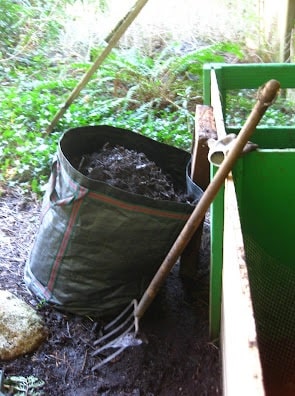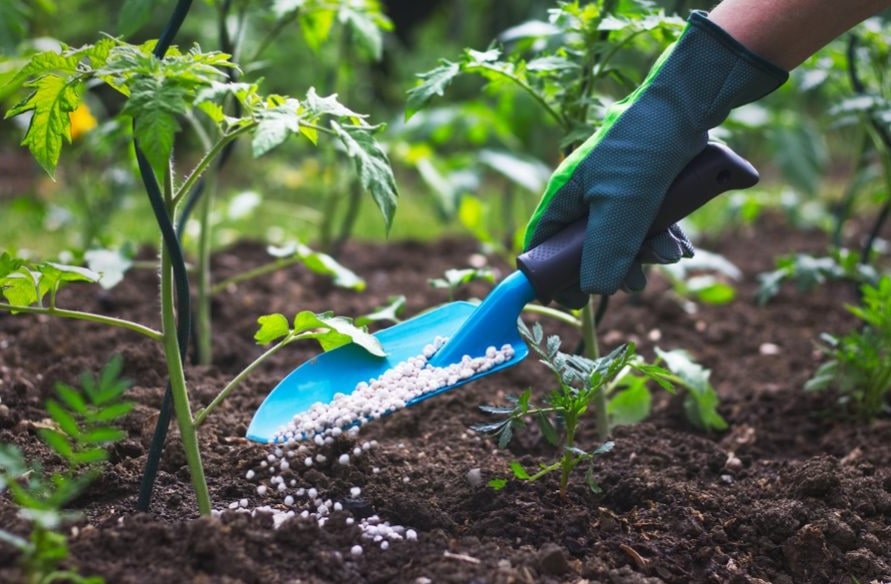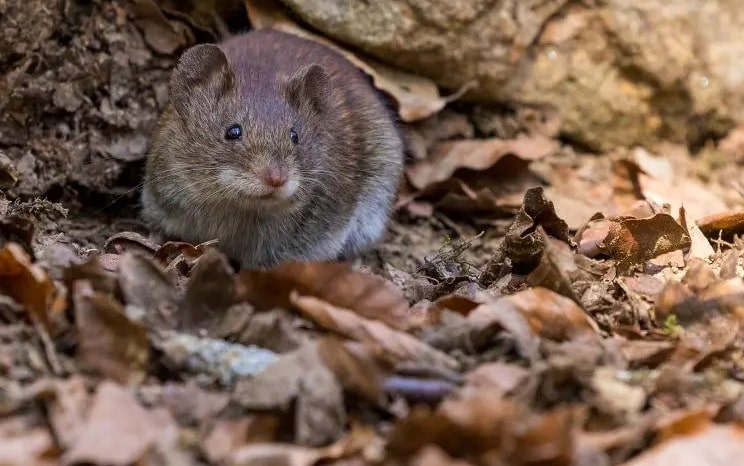Fungus-heavy compost
Often one has more difficulty making a fungus-heavy compost tea than a bacteria-heavy one.
If the goal is a fungus-heavy compost tea, here’s what to consider:
- Fungi are the first decomposers of organic material. For this reason, fungi are increasingly found in immature composts (fungi are no longer active at temperatures above 65°).
- The more woody material is used for composting, the more fungus-heavy the compost becomes (high C:N ratio).
- Fungi can be encouraged by pretreating the compost.
- Adding a handful of forest soil can promote diversity of microorganisms, especially fungi.
Mycorrhizal spores are very good to add at the end of the brewing process. 95% of all plants live in symbiosis with mycorrhizae, helping the plant both to transport nutrients and to create a better soil condition.
Pre-treatment of the compost
Fungi can be targeted by pretreating the compost. This is especially useful when fungus-heavy initial compost is not available. It is very difficult for fungal hyphae to grow during the brewing process. Pretreatment promotes growth and thus gives the fungi a better starting position. However, it is questionable whether the diversity of the fungi is also promoted or whether only a small proportion of the fungal species spread. For this reason, the effectiveness of pretreating compost with additives is currently still being studied (as of October 2015).
Here’s how:
- Mix oat or soy flour (high in simple proteins) finely ground with compost (ratio 1:20).
- Moisten mixture (damp, not wet!).
- Cover mixture with a cloth (to darken and keep moist, at the same time oxygen permeable)
- Store in a warm, dark place for 3-10 days
Note 1: If a white or blue mushroom turf forms on the surface, mix it back in. Aim for transparent and colored fungal hyphae. A microscope is very helpful for this.
Note 2: It has been observed (by Tim Wilson, Microbe Organics) that pretreating the compost also promotes bacteria-feeding nematodes, which are present in very small quantities in compost (and especially in compost tea). We can confirm this observation.
Note 3: Another way to pre-treat compost to promote fungi is to add diluted fish hydrolysate (15ml per liter of compost) to the compost. Then moisten compost, cover with a cloth and let sit for about 5 days.
Make mushroom-heavy compost yourself
If there is enough space and time, it is recommended to make a mushroom-heavy compost. The following composition makes a mushroom-heavy compost:
- 25% material with high nitrogen content (N)
- 30% green waste
- 45% woody material
Once the compost pile is assembled, it should heat up to 55-60°C within 24-72 hours.
If it does not, either too little nitrogenous material has been added or the decomposing organisms have been killed by pesticide residues present in the source materials. If there is too little nitrogen, simply add more nitrogen-containing material. If there are pesticide residues in the source material, it is possible to encourage pesticide-degrading bacteria by adding molasses or other sugar (mixed with water, 1% molasses/sugar) to the compost pile. If these bacteria have also already been killed there is still the option of adding commercially available bacterial preparations to the compost pile.
When the compost pile has reached a temperature of 70°C, it should be turned to avoid killing the beneficial organisms due to excessive heat.
After turning three to four times, the directly available nutrients should be depleted and the protozoa will multiply more. The temperature should drop below 60°C. At 45°C, nematodes begin to spread.
When the compost pile has cooled down to the ambient temperature it is a sign that the compost is now ripe. If the compost is turned again at this time and heats up again, the compost is not yet mature.
In the following 6 months (approx.), the microbial diversity continues to increase. After that, the mature compost loses its microbial diversity again over time. After about 2 years, there is little difference from the topsoil (in terms of microbial life).








